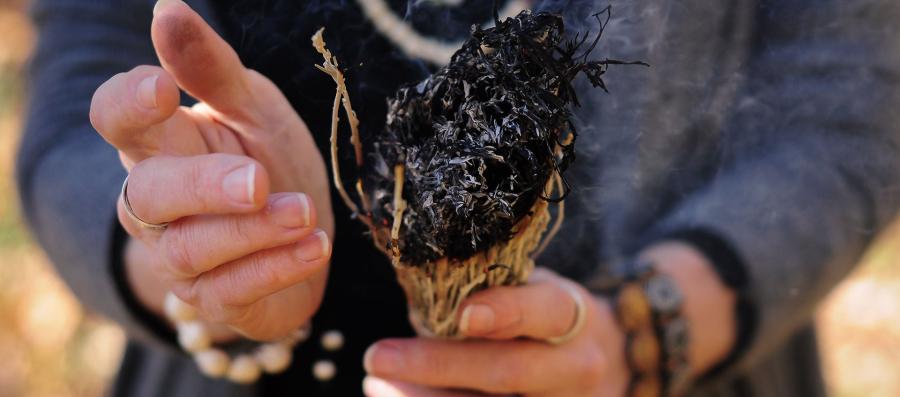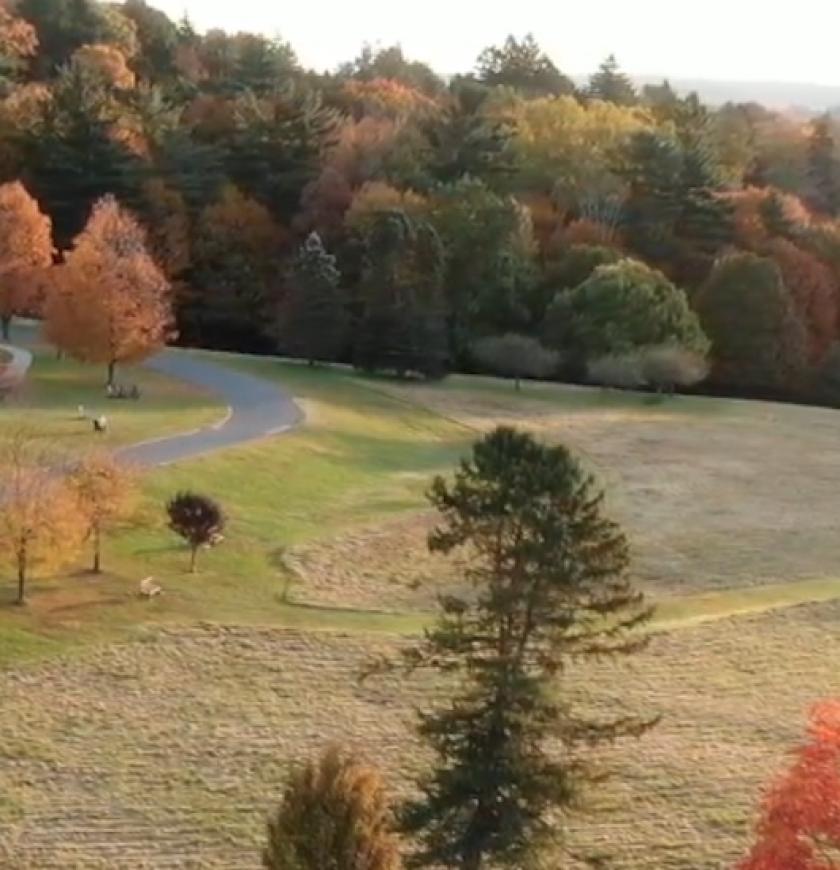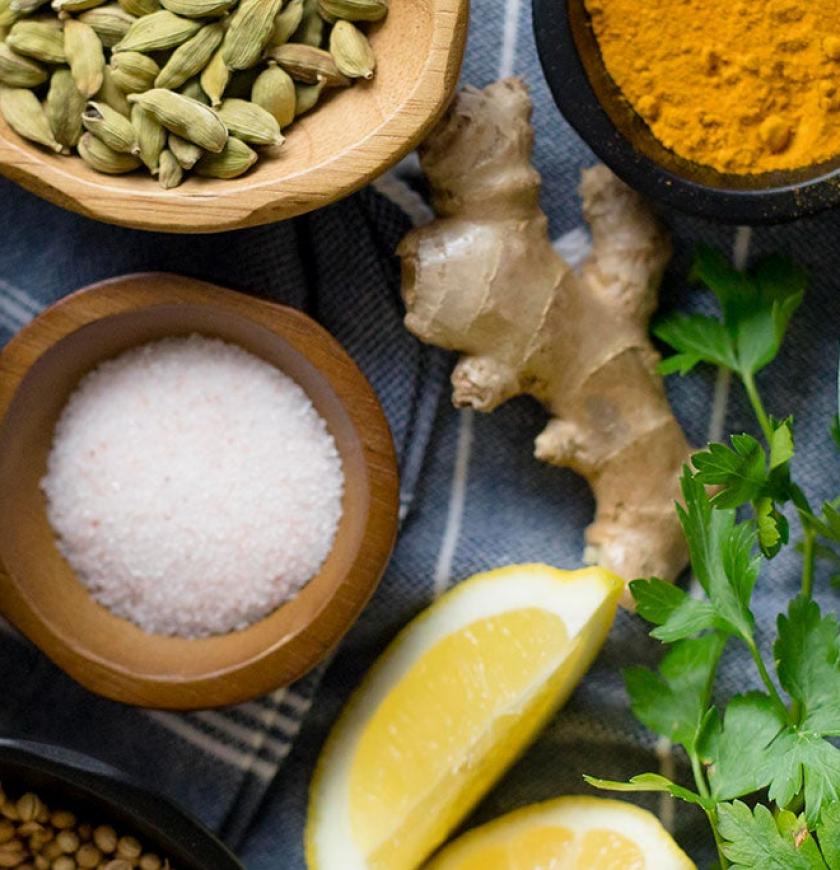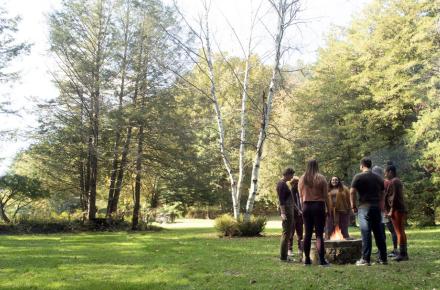The Sacred Art of Smudging

Many people have heard of smudging, and may even practice it, but there’s great value in knowing its history and understanding its true sacredness.
There are three primary herbs used in the Native American tradition for smudging: sage, cedar and sweetgrass.
- Sage is used to dispel negative energy.
- Cedar is used for an overall blessing or to cleanse where there has been illness.
- Sweetgrass draws in positive energy.
I have been taught the importance of burning only one herb at a time for smudging; otherwise you are giving mixed messages. Sage is the most commonly used for cleansing the energy field of a person, place, or thing, so I will focus on it for this article.
How Sage Came to the People
This is a story from Bear Heart, my Native teacher.
A long time ago, there was a village in North America where it seemed like things were going from bad to worse, to the point that things of a negative nature seemed to be predominant. Things were going wrong, craftsmen were making mistakes in their work, people were making accusations against one another, and people were accused of practicing evil.
There was a whole lot of discord among the people: friends and neighbors having falling-outs, not allowing their children to play with the neighbor’s children. Many things like that were happening.
All of a sudden, a young boy around 13 or 14 years old showed up in the village with a bundle in his arms. As soon as he arrived, he asked to see the elders of the village.
When they were summoned, he asked them to sit in a circle. As they did so, he said, “I have this plant I want you to look at. You can recognize it when you see it again because it will be growing in this area. It is called sage. It’s going to enable you to handle all the negative things that are blowing around this whole camp. That’s why I was sent to you. And so, please smell this and pass it around.”
As they did, they began to feel good toward one another. While they were doing that, he built a fire very quickly. When the sage came back to him in the circle, he put coals in a pile using his bare hands. Then he put all the sage on it and said, “I want you all to smudge yourselves. This is how you do it.”
While they were smudging themselves, each one suddenly began to feel good about the person next to him. They were so busy acknowledging one another that, when they looked again for the boy, he had disappeared. They didn’t know where he came from or where he went.
That’s a story of how sage came to the people.
Smudging with Sage
For thousands of years, incense and smoke have been used in spiritual and religious settings to connect with the spirit realm. Incense is still used today in the Roman Catholic Church and other religions for purification.
Native elders teach that the smoke of dried sage clears negative energy and restores harmony. The smoke created by smudging connects our physical plane to the realm of the sacred, and opens a portal to the world of subtle spiritual energies. We are also connecting with thousands of years of prayer and ceremony when we smudge. Smoke from smudging can also carry up our prayers to the Great Spirit.
The Research on Smudging
Research reveals that smudging works as an antiseptic. A study published in the journal Ethnopharmacology in 2007 found a 94 percent reduction in the bacterial count of a room that had been treated for one hour by smudging with medicinal herbs.
One hour is a long time to be smudging, and would likely set off smoke detectors, but it’s good to know that it brings about some reduction in bacteria. Once again, our Native elders understand both the spiritual and physical realms better than modern man.
When and Why to Use Smudging
Smudging is often the first step in any ceremony. It helps bring the participants into the present, leaving behind the stress of their lives and other distractions. There’s no limit to the situations where smudging can be of benefit:
- Smudge yourself off with sage when you get home from work each day, or when you’ve had an upsetting incident.
- Smudge the participants at the beginning of a meeting or ceremony in order to help everyone become centered and present.
- Clear an area where there’s been an upset by burning sage.
- If you have spiritual instruments, it’s good to smudge them regularly: i.e., feathers, fetishes, crystals, etc. Burn the sage and draw the objects though the smoke four times.
- Smudge yourself when you awaken in the morning to dispel any negativity from the day before or that came up in your dreams. Bathe yourself in the smoke, to purify your energy field by drawing the smoke over yourself four times: over your heart, saying “harmony”; over your head, saying “humor”; down your front, saying “humility”; and behind you, saying “honesty.” You’re drawing these qualities into yourself as you do so.
- Smudge your home on a regular basis, smudging towards an open window.
- Planting a garden? Smudge the seeds both before and after planting to give them a good start.
- If you receive something that has been used by others, such as a purchase from a thrift store, smudge it with sage before using it to eliminate the energy of the previous owner, and create a new start for yourself.
How to Smudge
You will need
- Sage (either loose leaves or a smudge stick)
- An abalone shell (or anything that can handle the heat of the burning sage)
- A lighter
- A feather to help fan the smoke (optional).
Light the sage and start smudging; pass the abalone shell around to distribute the smoke. If you have a feather, you can use it to send out the smoke in different directions.
When you’re done, you can put out the burning sage by pressing it into the abalone shell or the ground. When you’re finished, return the ash to the ground.
Where to Get Sage for Smudging
The ideal is to pick your own, always making an offering of tobacco. Never pick all the sage in one area; leave some so it looks as though you were never there. And never pull it out by the roots.
You then hang it to dry, out of the sun. If it dries too fast, with too much heat, you’ll kill off the essential oils which give it its good smell.
You can also grow sage or even buy it. In the old days, when they reached adolescence, Native youth were taken down to the sage fields and introduced to the sage plants ceremonially, asking permission of the spirits of the plants to be able to pick it. That’s how things are done in the traditional way—with great respect.
Today, we can buy sage bundles in metaphysical book stores or on Amazon, hoping they were harvested in a good way. That’s the way it is with everything in life today. We may have easier access to obtaining spiritual objects by buying them—in the old days such things were earned—but most important is that we use them in a respectful and prayerful manner.
It is up to each individual to find the sacred in everyday life, and smudging is a good place to start.
Find out about upcoming programs with Molly Larkin at Kripalu.
This article was originally published on Molly’s website.
































